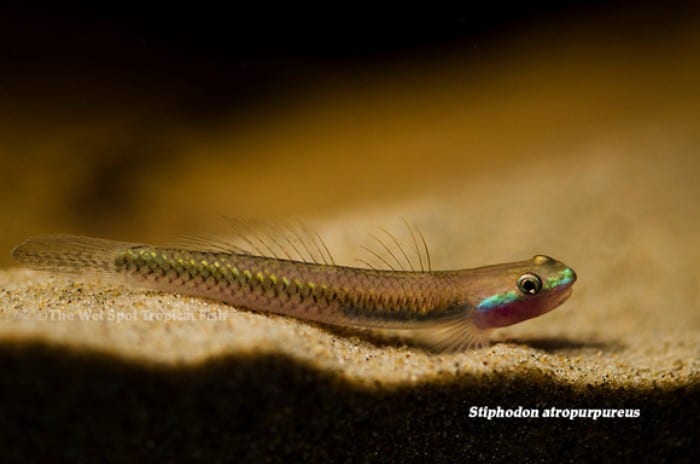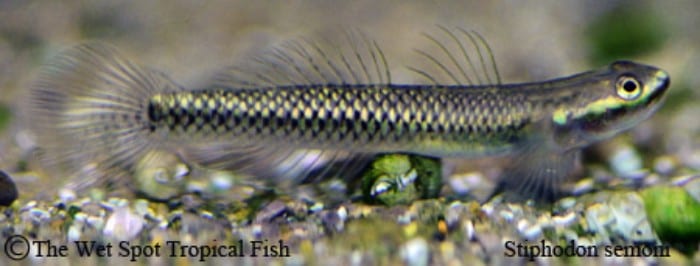Goby Crazy!
Goby Crazy
As everyone is planning their sequined and ornamental attire to ring in the new year, a special genus of gobies are doing the same. Stiphodon gobies of the Tropical Indo-Pacific region are shimmering and ornate individuals with some of the most astounding capabilities and traits found in the aquatic world. Similar to the most determined sorority girls, these gobies go great lengths to reach the best party, and they look good doing it. Stiphodon gobies inhabit coastal streams of tropical volcanic islands, which are a challenge to access, but they payoff is a biofilm and algae all-you-can-eat dream buffet with no line.
Scientific NameStiphodon ornatus
Common NameOrnate Rainbow Goby
Temperature / pH71 to 82°F / 6.5 to 7.5 pH
Native LocationSumatra / Indonesia
Preferred DietAlgae
Born from a need to be on the move, these gobies developed a unique reproductive strategy. Males utilize their bright coloration to entice females to their spawning site, where she can lay up to 10,000 small eggs at once. Then, rather than hatching as fry after developing enclosed within an egg, these gobies have a mobile larval stage. Larvae hatch with yolk sacs attached, lacking mouth or anus, and make their way downstream toward the ocean. The yolk sack is absorbed within 3-4 days, and they spend the rest of their juvenile stage developing under marine conditions. After reaching maturity, these fish make a great journey over rocky obstructions and waterfalls back upstream to join the other adults. They accomplish this feat with their feet, or rather, their specialized pelvic fins which allow for suction to rocky surfaces as they climb.
Scientific NameStiphodon atropurpureus
Common NameBlue Neon Goby
Temperature / pH71 to 82°F / 6.5 to 7.5 pH
Native LocationPhilippines
Preferred DietAlgae
Stiphodon gobies tend to inhabit remote locations with a many habitat and behavioral consistencies between species, though they generally do not overlap in time and space. These gobies tend to live on the rocky bottoms of well oxygenated, fast flowing streams. There is little to no aquatic vegetation present, though conditions nurture extensive layers of biofilm, which provide an excellent food source. In captivity, these gobies will consume biofilm off sponge filters, which aquarists can leave uncovered. Tanks should include rocky substrate with pebbles, sand, and rocks of varying size, and old pieces of driftwood. Waters should be maintained with high clarity and oxygenation with filters, pumps, and airstones, temperatures between 71 and 82°F, pH of 6.5 to 7.5, and hardness of 36 to 215 ppm.
Scientific NameStiphodon semoni
Common NameBlue Cobalt Goby
Temperature / pH71 to 82°F / 6.5 to 7.5 pH
Native LocationIndonesia
Preferred DietAlgae
Stiphodon translates roughly to grouped teeth in reference to their closely packed teeth near their upper lips. This dentition allows these gobies to graze biofilm, and scrape surfaces clean of algae. If sufficient supply of algae cannot be grown in the tank, aquarists should provide their gobies regularly with algae covered rocks. In addition to these delicacies, these fish can be fed sinking dried pellets, and infrequent offerings of live and frozen fare like bloodworm, brine, and daphnia. Gobies are generally peaceful, though males may get territorial on occasion. Overall, they make good tankmates for similarly sized bottom dwellers like loaches, danios, some livebearers, and caridina shrimp.
Proud of our rare, wild Stiphodon Goby selection, these small athletes are guaranteed to catch your eye and your fancy.


